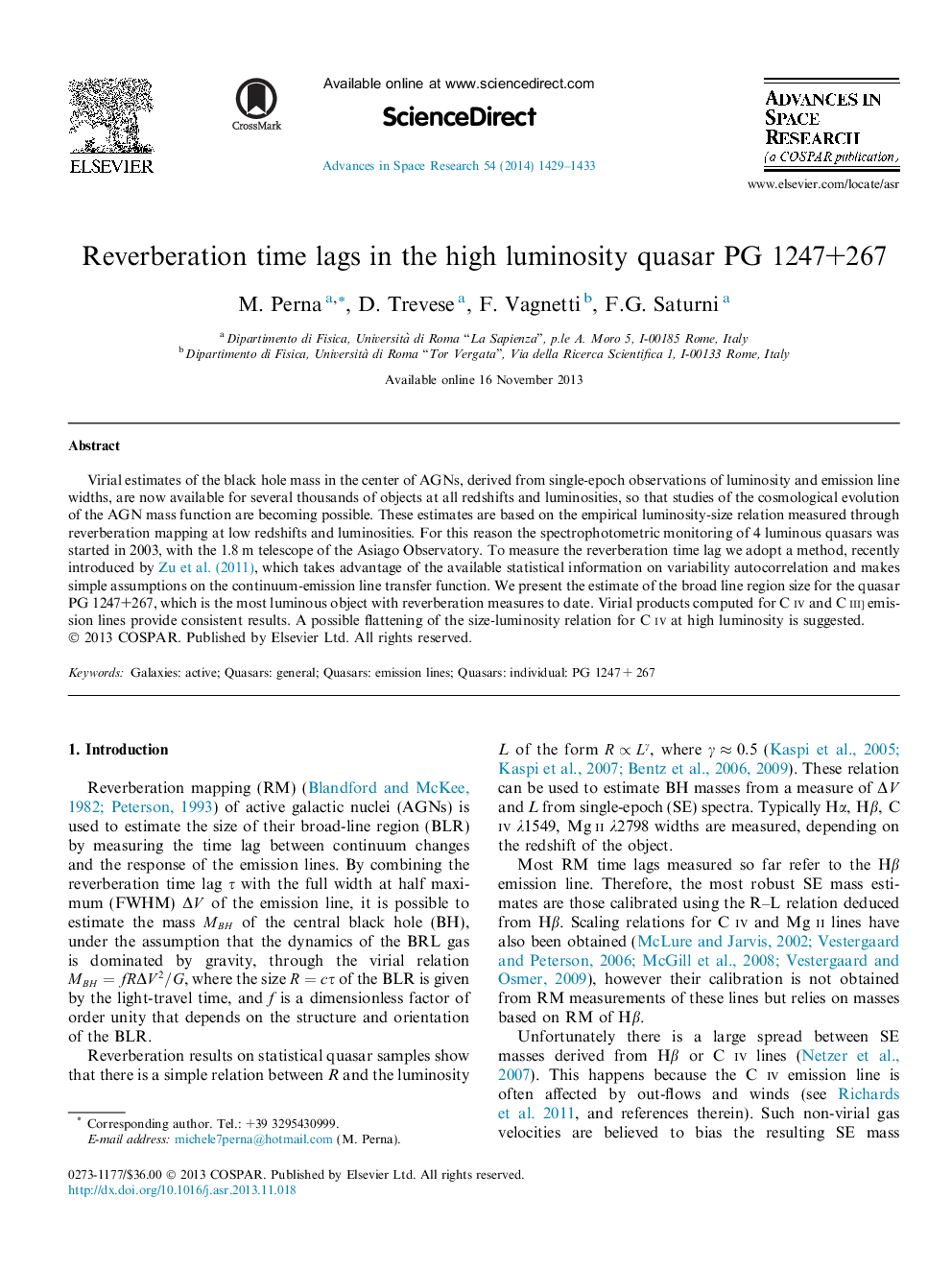| Article ID | Journal | Published Year | Pages | File Type |
|---|---|---|---|---|
| 1764719 | Advances in Space Research | 2014 | 5 Pages |
Virial estimates of the black hole mass in the center of AGNs, derived from single-epoch observations of luminosity and emission line widths, are now available for several thousands of objects at all redshifts and luminosities, so that studies of the cosmological evolution of the AGN mass function are becoming possible. These estimates are based on the empirical luminosity-size relation measured through reverberation mapping at low redshifts and luminosities. For this reason the spectrophotometric monitoring of 4 luminous quasars was started in 2003, with the 1.8 m telescope of the Asiago Observatory. To measure the reverberation time lag we adopt a method, recently introduced by Zu et al. (2011), which takes advantage of the available statistical information on variability autocorrelation and makes simple assumptions on the continuum-emission line transfer function. We present the estimate of the broad line region size for the quasar PG 1247+267, which is the most luminous object with reverberation measures to date. Virial products computed for C iv and C iii] emission lines provide consistent results. A possible flattening of the size-luminosity relation for C iv at high luminosity is suggested.
